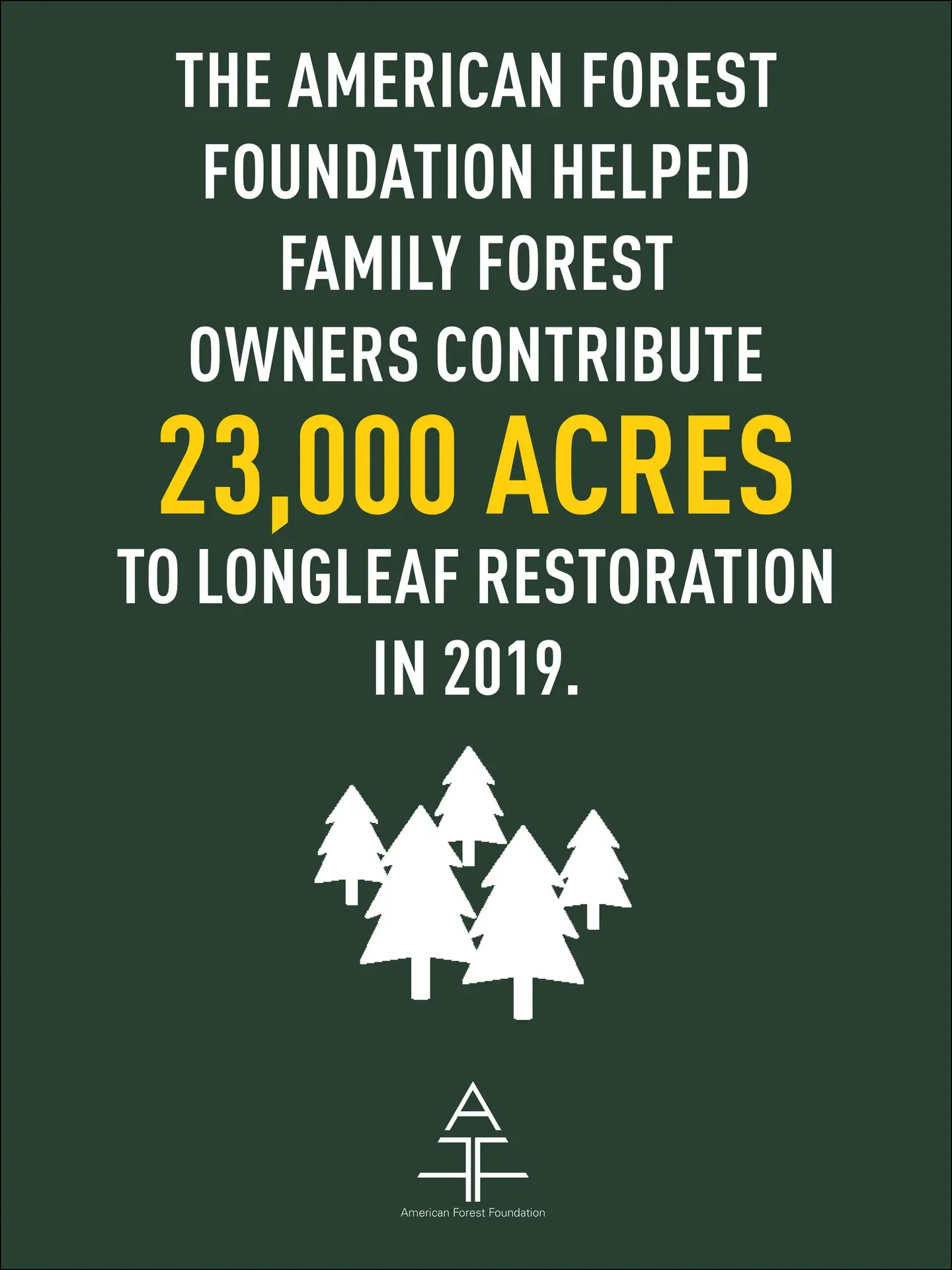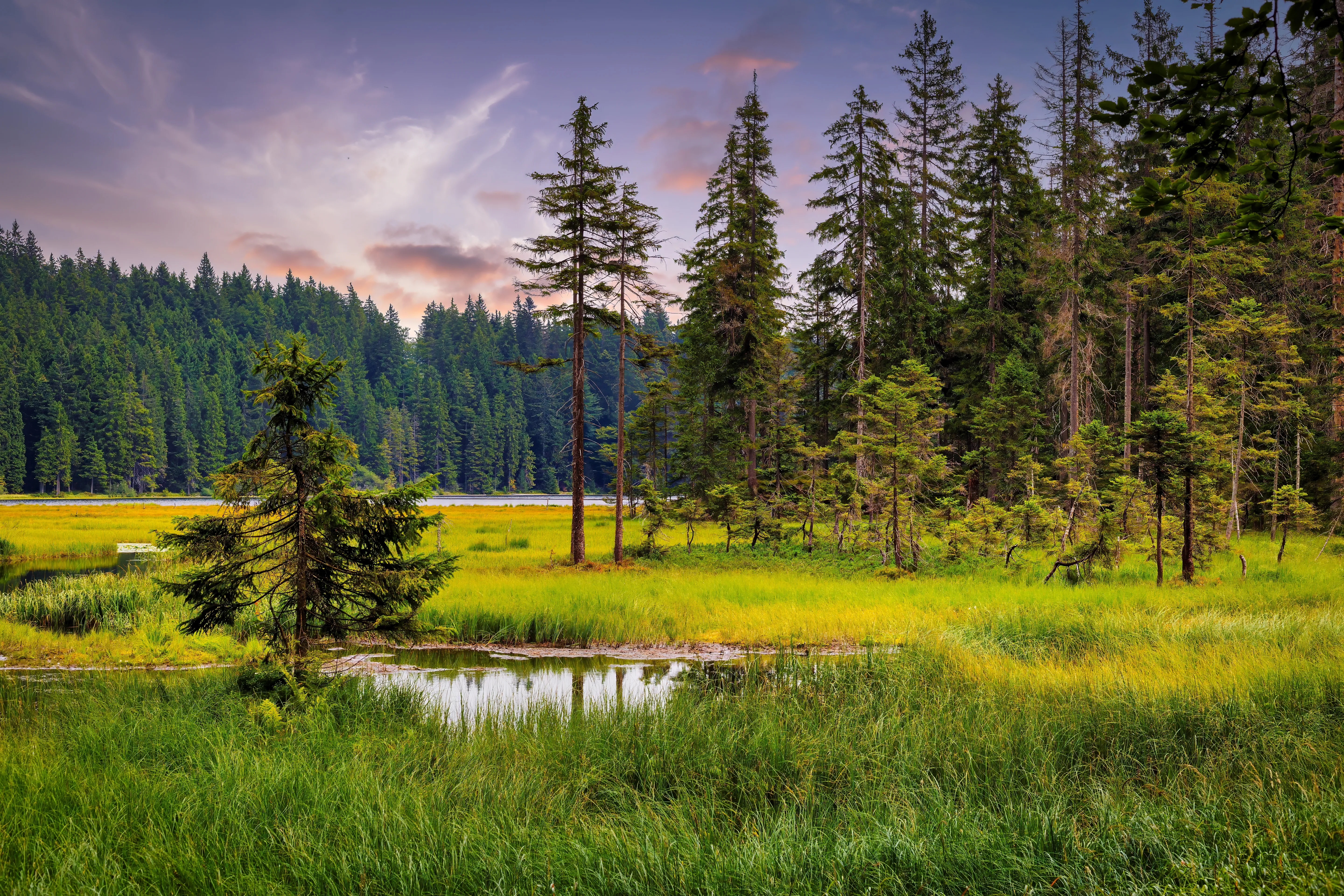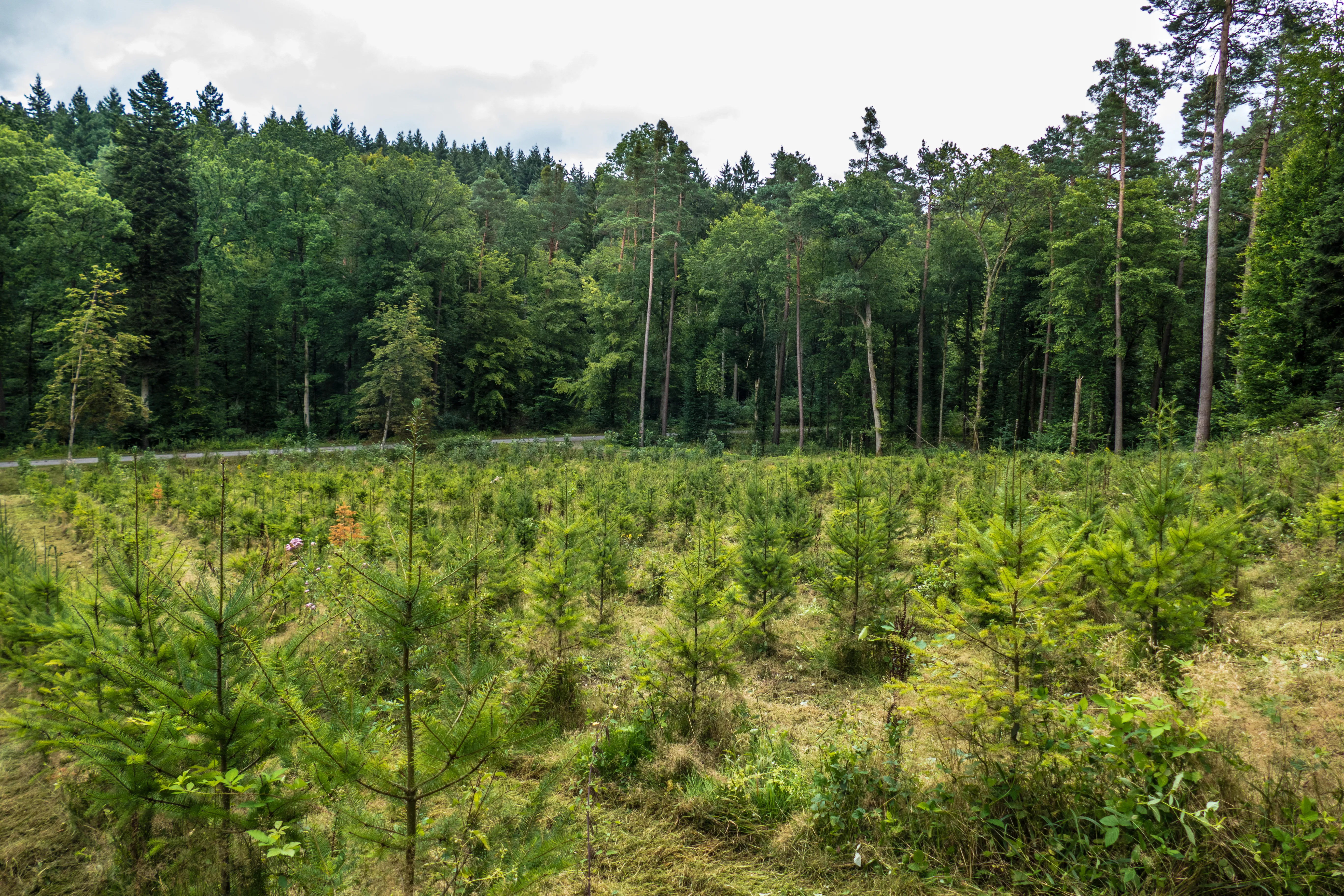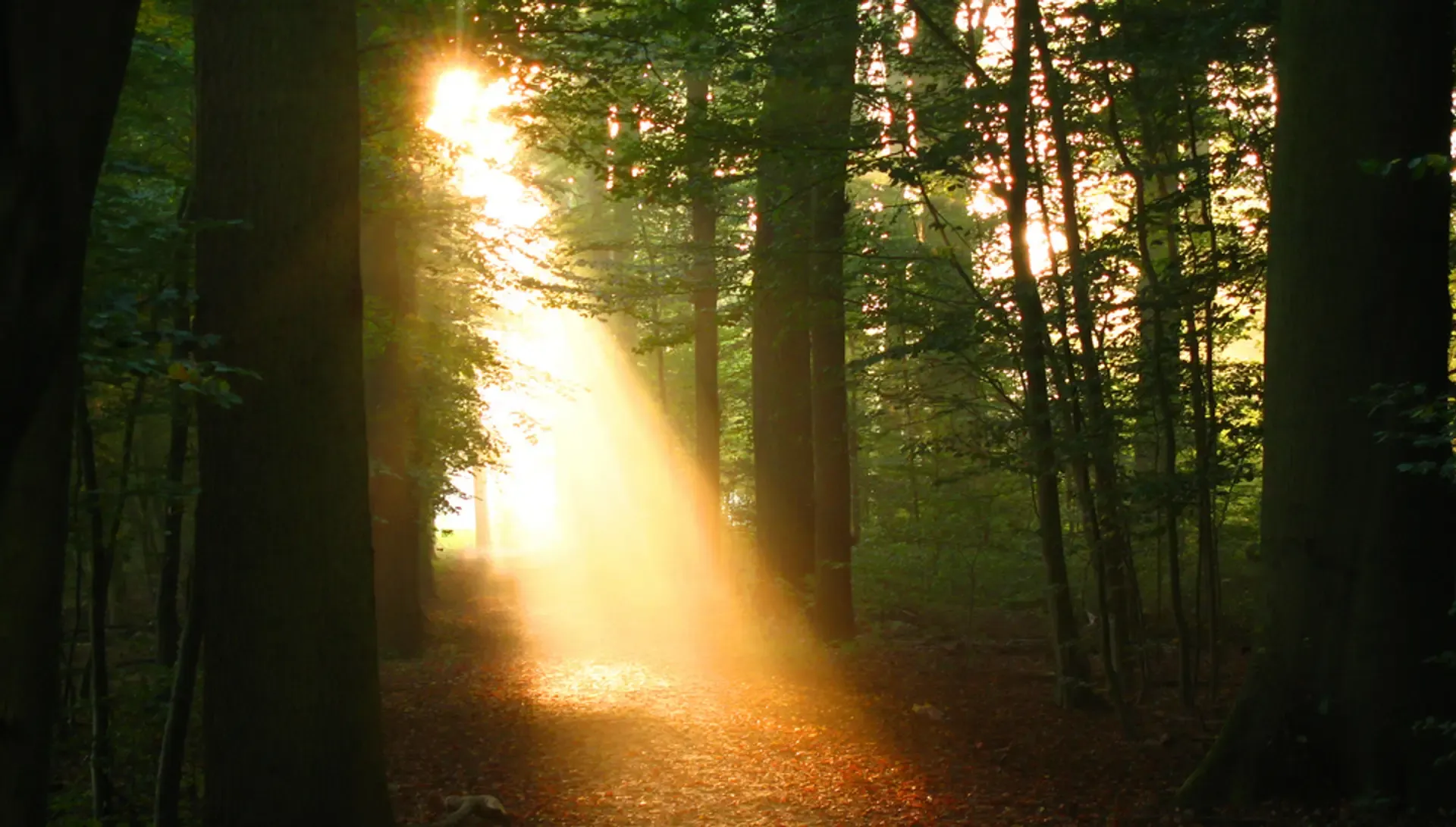AFF Helps Family Forest Owners Make Significant Contribution to Longleaf Restoration
Recently, the America’s Longleaf Restoration Initiative (ALRI), a collaborative effort among a large cohort of public and private sector partners, released its 2019 Range-Wide Accomplishment Report. The Report showcases the collective efforts from the past year to restore the critical longleaf pine ecosystem across the South. Overall the report highlighted that an incredible 113,000 new acres of longleaf had been established on private land, and another 375,000 acres of existing longleaf pine has been improved through prescribed burning or other maintenance activities.
The American Forest Foundation (AFF), a long-time participant in the ALRI coalition, is proud to have supported one of the most significant non-profit contributions to these results – 23,000 acres – to longleaf restoration. Through its work, AFF is facilitating more family forest owners be a part of the solution and make important contributions to biodiversity and wildlife needs.
Longleaf pine was historically the dominant forest type across the Southeast, but fire suppression and conversion to other land uses or forest types reduced longleaf to less than 5% of its original range. This loss has had a significant impact on wildlife and other biodiversity values. For example, the loss of longleaf pine has led to the decline in the gopher tortoise, as well as more than 362 other species of invertebrates, mammals, reptiles, and amphibians that use the tortoise’s burrows as refuge. Like the gopher tortoise itself, many of these species are considered to be threatened.

To address the longleaf challenge, a wide range of partners are working to restore this species across both public and private land. Families and private individuals own more than half (58%) of the forested acres across the South, making them a critical component to the success of restoring this ecosystem. What’s more, these individuals care about wildlife habitat and the future of their land, and want to help. What has prevented them from acting is uncertainty about what to do, and the cost of forest management.
“There are landowners who are doing some management or are just getting started that are searching for help and resources. On the other hand, there are great public programs available that provide professional support and help cover some of the costs if you want to get involved with conservation. Surprisingly, there’s a common misconnection between these two. That’s where AFF comes in,” shares Chris Erwin, Director of Southern Conservation and Biodiversity at AFF and Vice-Chair of the AFRI coalition. “We are removing roadblocks for both landowner and our partner groups and agencies, and getting to impact faster.”
To do so, AFF is partnering in 16 landscapes across 7 states that are critical to longleaf restoration. In these projects, AFF brings innovative tools and solutions that combine the right resources and expertise, expedite the process and engage more landowners in active sustainable forest management.
Providing expertise in marketing and landowner recruitment: Not all landowners are the same, which is why AFF works to meet landowners where they are – focusing on what’s important to them. Through our new web-based tool, WoodsCamp, AFF has been more efficiently pinpointing forest owners who might be a good fit for longleaf restoration, and connecting these owners with foresters faster.
Expediting critical steps: With many steps from interest to action, it can take months for a landowner to complete a conservation activity such as planting longleaf. Tools such as our landscape management plan are saving time for both landowner and forester.
A coordinated process and advanced data management: With nearly 50 partners working together across these projects, coordination is key. AFF has developed a management and monitoring system coordinate efforts and better support the associations, forestry professionals, and federal and state agencies on the ground.
Leveraging funds: AFF has worked to combine resources to scale up efforts on longleaf. Partnering with the National Fish and Wildlife Foundation (through its Longleaf Stewardship Fund) and bringing in corporate partners who place a focus on positive forest outcomes, AFF is leveraging funding and bringing more dollars to bear for forest owners.
AFF’s work in total from 2019 contributed 4,000 acres of new longleaf established across the South. While this work is just a portion of the larger ALRI effort, it is a vital component if the coalition is to accomplish its 15 year goal of 8 million acres of longleaf restored.
Already in 2020, AFF is expanding on this success – bringing new corporate partners to the table who care about sustainability and biodiversity, and expanding its tools and support to more partners.
Learn more about AFF’s specific tools and solutions and how you can partner with AFF or connect with us at info@forestfoundation.org.
Related Articles

September 4, 2025
Nature is Worth Investing In: Breakthroughs in the Voluntary Carbon Market
As we head into Climate Week, it’s worth pausing to take stock of how far the voluntary carbon market (VCM) has come. For years, this space has been scrutinized, challenged, and even questioned—but over the past few years we’ve seen positive breakthrough after breakthrough, which shows just how much progress has been made.

September 3, 2025
Netflix Signs Carbon Credit Deal with AFF
The American Forest Foundation (AFF) announced today that Netflix has committed to a 15-year contract to purchase verified carbon credits produced through AFF’s Fields & Forests project (F&F), an Afforestation, Reforestation, and Revegetation (ARR) carbon project that partners with family landowners to transition their underused fields to thriving, working forests.

October 29, 2024
Branching Across the Aisle: How Building a Voluntary Carbon Market Benefits Rural Communities & The Planet
With the presidential election right around the corner, our television screens and social media feeds are filled with divisive messages and rhetoric. However, in a time where finding common ground seems nearly impossible, there is at least one thing that Americans on both sides of the aisle support: our forests.